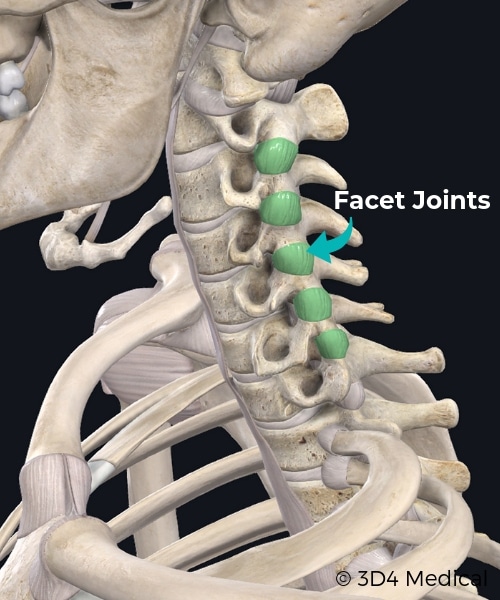What is Cervical Facet Sprain?

Your facet joints are found at all levels of your spine. They assist with some movement but they also play a large role in restricting your neck range of motion.
This is to help prevent structures in your neck becoming overstretched and reducing the chance of injury.
A sprain occurs when the ligaments around the joint and the capsule within it become irritated and inflamed.
This is generally a short-term injury but can be quite debilitating. Initially most movements of the neck will aggravate it and the pain may be severe.
How Does This Occur?
There are many different factors that can predispose a facet sprain; some may be the result of longer term postural or repetitive strain or they may be the result of acute trauma:
- spending long periods of time in a slumped posture
- sleeping in an awkward position
- poor desk/work station ergonomics
- head/neck trauma or whiplash injury
- other back or shoulder injury which may increase stress on the neck over time
- pregnancy and breast feeding
- significant weight gain
What are the Symptoms of Cervical Facet Sprain?
- Neck pain that is often described as sharp on movement but an ache otherwise
- Neck stiffness
- +/- Headache, particularly in the back of the head
- Tenderness when pressing on the neck
- Referred pain and spasming giving shoulder pain and upper back pain
How Is a Neck Sprain Managed?
After the diagnosis is made, a treatment plan will be discussed with you. In many cases a combination of manual therapy/Osteopathy and home exercises will help you return to normal function.
If the pain is severe and you are struggling to sleep, pain medications (analgesics and NSAIDs) may be useful as suggested by your General Practitioner.
Manual Therapy may involve:
- stretching of the muscles
- mobilisation or High Velocity Low Amplitude (HVLA) techniques to the joint
- massage
Some of the more common home exercises for this type of injury include:
- stretching of the neck and shoulder muscles
- exercises to strengthen the muscles in the front of your neck
- self mobilisation exercises for your neck and back
***every individual case is managed differently so you may require a different form of management***
How Is It Diagnosed?
This is usually diagnosed based on the history (e.g. location, onset and type of pain) along with physical examination. Imaging is not usually required for a neck facet sprain.
